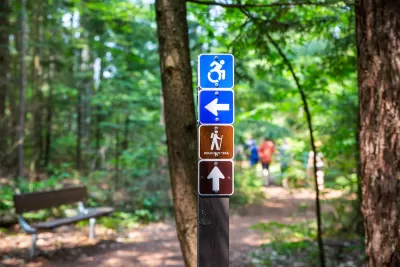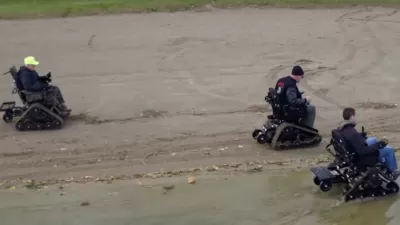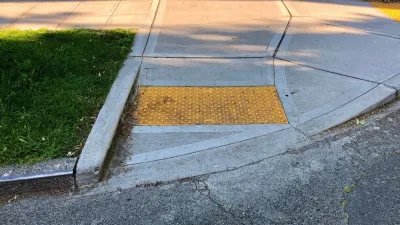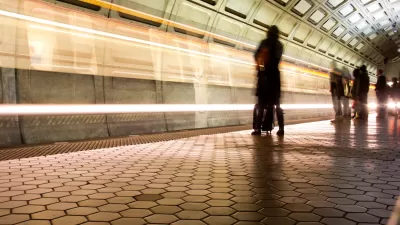State parks are introducing adaptive mobility devices to help more visitors enjoy natural spaces.

Writing in Governing, Tom Peterson outlines the effort states are making to make more parks and cultural resources accessible to residents with mobility challenges.
“In Minnesota, such efforts got a significant boost earlier this year when legislators funded the Department of Natural Resources’ $149.9 million Get Out MORE (Modernize Outdoor Recreation Experiences) initiative.” Visitors who want to see the Split Rock Lighthouse can now borrow all-terrain chairs that make Pebble Beach, a popular vista point, accessible to wheelchair users.
States including Michigan, Wisconsin, and Iowa have launched similar initiatives to provide adaptive equipment and facilities like track chairs, cross-country sit skis, and modified kayak launches. “Some state parks also offer chairs that bring visitors onto beaches or even into the water. In several Massachusetts state parks, for example, visitors can use four-wheeled sunbathing chairs on the beach, or three-wheeled floating chairs in the ocean.”
The article adds, “As much as technological gains and new programs help, experts and advocates said improving access does not always require major expenditures. In reaching a community that long had no or limited access to outdoors recreation, communication is vital” to ensure people are aware of the mobility options available to them.
FULL STORY: States Spend Millions to Make Parks, Trails More Accessible

Trump Administration Could Effectively End Housing Voucher Program
Federal officials are eyeing major cuts to the Section 8 program that helps millions of low-income households pay rent.

Planetizen Federal Action Tracker
A weekly monitor of how Trump’s orders and actions are impacting planners and planning in America.

Ken Jennings Launches Transit Web Series
The Jeopardy champ wants you to ride public transit.

Rebuilding Smarter: How LA County Is Guiding Fire-Ravaged Communities Toward Resilience
Los Angeles County is leading a coordinated effort to help fire-impacted communities rebuild with resilience by providing recovery resources, promoting fire-wise design, and aligning reconstruction with broader sustainability and climate goals.

When Borders Blur: Regional Collaboration in Action
As regional challenges outgrow city boundaries, “When Borders Blur” explores how cross-jurisdictional collaboration can drive smarter, more resilient urban planning, sharing real-world lessons from thriving partnerships across North America.

Philadelphia Is Expanding its Network of Roundabouts
Roundabouts are widely shown to decrease traffic speed, reduce congestion, and improve efficiency.
Urban Design for Planners 1: Software Tools
This six-course series explores essential urban design concepts using open source software and equips planners with the tools they need to participate fully in the urban design process.
Planning for Universal Design
Learn the tools for implementing Universal Design in planning regulations.
Ada County Highway District
Clanton & Associates, Inc.
Jessamine County Fiscal Court
Institute for Housing and Urban Development Studies (IHS)
City of Grandview
Harvard GSD Executive Education
Toledo-Lucas County Plan Commissions
Salt Lake City
NYU Wagner Graduate School of Public Service





























